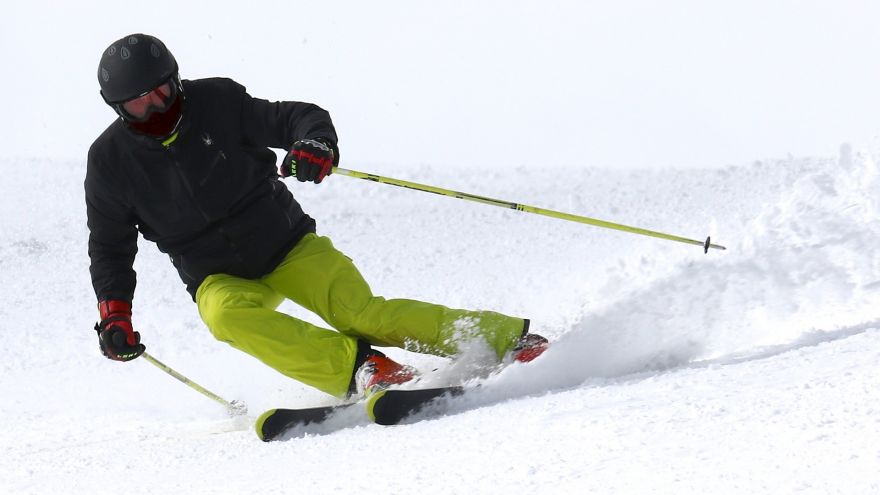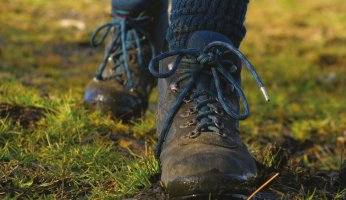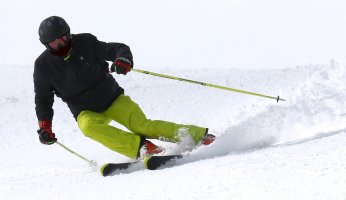Most Common Skiing Injuries and How to Avoid Them!
 Most Common Skiing Injuries and How to Avoid Them!
gearweare.net
Most Common Skiing Injuries and How to Avoid Them!
gearweare.net
Winter is almost here! You know what that means? The wind will be tad strong and the temperatures will be slightly colder and above all, winter means more snow. And more snow means skiing and snowboarding. This season often brightens the eyes of many skiers and snowboarders. One short drive and you can end up in mountain heaven packed with fresh snow. It’s the feeling of not being able to control your body, the awe of having such a beautiful view of the spectacular landscape; everything seems to feel just perfect.
No doubt skiing and snowboarding are perfect for all ages of fun, but don’t let the fluffy snow and breathtaking mountains distract you from the dangers that these sports can have. The sport comes with a certain amount of risk, and the truth is injuries can happen to even the professional skiers. Well, nobody is perfect and no sport is without its fair share of risks and fun. It’s fun and exhilarating but let’s face it, we are not experts on risk analysis and accidents happen on the slopes. But that doesn’t hold you back from enjoying the snow and the sport.
But you can minimize that risk. Whether you’re preparing for your first time on the mountain or you’ve been skiing for quite some time now, here are some common ski injuries to keep an eye out for and how to avoid them.
Table of Contents
Knee Ligament Injuries

Skiers often hurt their knees, but shoulders and even thumbs could also be suffered in a tumble which is bad. An MCL (Medical Collateral Ligament) sprain or tear is one of the common knee injuries that is caused by a twist in the knee. Landing in awkward positions will do that to you because the stance puts a lot of strain on your knees making it even more vulnerable to potential injuries. Even a slight twist of the knee in the slopes might lead to a minor MCL sprain that might result in bruising and swelling, and pain will follow eventually.
How to Avoid?
The best thing you can do to avoid the injury is to keep cautious of the sharp turns and to totally respect your limits. Take some lessons your first time out and master the level you’re at before taking on the mountains. Jumping up before you’re ready is risky business for both you and the other skiers. Additionally, when the slope gets icy, it’s harder to make your edges hold. If the conditions are poor, it’s best to stay put rather than hitting the slopes. Always listen to your body because your body begins to lose its ability to respond the way it usually does when you get tired. Wrap things up when it starts to get dark because you could lose visibility.
Anterior Cruciate Ligament (ACL) Rupture

Most downhill skiers are prone to ACL damage. The anterior cruciate ligament or ACL is a crucial ligament that holds knee joint together and when a skier lands a jump in an awkward position, the force of which can cause ACL tear and you can hear an audible sound when that happens and a brief, acute pain will follow eventually. The knee starts to become unstable and it can get more painful. It might take a few weeks before your knee returns to its normal recognizable size and depending upon the condition, the knee may also require surgery.
How to Avoid?
The best way to avoid ACL tear is to work on your posture while landing and try to push your weight forward while doing that. You can start practicing with simple landings while advancing to more difficult jumps. Make sure you’re both physically and mentally prepared to hit the slopes. Go gentle on your skiing in the beginning and take one step at a time. Take enough breaks if necessary when you’re tired. And always check your gear before hitting the slopes.
Skier’s Thumb
Sometimes a skier accidentally falls with his hands outstretched with a ski pole which creates a force necessary to stretch the ligament enough to hurt your thumb causing an injury known as the skier’s thumb. The pole snatches in the snow and levers into the inside of the thumb. Skier’s thumb accounts for a significant number of skiing injuries. In critical cases, with complete tearing of the ligament, this injury must be surgically repaired. A surgery is needed or not basically depends on initial diagnosis and how crucial the injury is.
How to Avoid?
There’s no particular form or technique that you could work on to prevent skier’s thumb from happening altogether, but as prevention is better than cure, the best thing you can do is to get a good hold of your ski pole belt, especially while landings. This way you can immediately get rid of the poles if you sense any kind of danger without hurting your thumb while keeping the poles secure. Always wear proper gear such as a thumb stabilizer to safeguard thumb ligaments wihout limiting hand movement.
Head and Spinal Injuries
The chances of severe and life-threatening head injuries in skiing are zero to none with a few exceptions of course – spinal and head injuries account for less than 10% of skiing injuries – they are still important to keep an eye out for. They are usually caused by collision into trees, lift towers, rocks, and chair lift incidents. They also tend to be more frequent in skiers who strive for speed because speed is the predominant factor is head and spinal injuries. Even by any chance, you hurt your head it’s hard to evaluate the risks, at least not until the initial diagnosis is done. The chance of concussion is very less and that’s what helmets are for.
How to Avoid?
Research on helmets tends to be mixed but it’s highly recommended for intermediate skiers at the very least. On fall or one bump, could be just enough to start a concussion. Helmets can come in quite handy during low-velocity collisions, especially with adults, however, at higher velocities, they are not so effective, as the energy and trauma are often transmitted to the spine, where injuries are just as catastrophic. This is particularly true in children who don’t have the musculature to support the weight of a helmet and the strain on the neck becomes too severe.
Frostbite
 No matter you’re a seasoned skier who’s been doing skiing for the most of his adventurous life or a newbie who’s just starting up, there is a whole lot to consider before hitting the slopes. You might have put a check on all possible extremities but the one thing that puts you at a greater risk is the frostbite. As the name suggests, frostbite is an extreme condition where your body tissues literally freeze. Prolonged exposure of your body and skin to sub-zero temperatures will do that to you and you’ll start to feel aching pain followed by numbness.
No matter you’re a seasoned skier who’s been doing skiing for the most of his adventurous life or a newbie who’s just starting up, there is a whole lot to consider before hitting the slopes. You might have put a check on all possible extremities but the one thing that puts you at a greater risk is the frostbite. As the name suggests, frostbite is an extreme condition where your body tissues literally freeze. Prolonged exposure of your body and skin to sub-zero temperatures will do that to you and you’ll start to feel aching pain followed by numbness.
How to Avoid?
The best way to prevent frostbite is to stay dry and warm in the first place. A few simple interventions can help you not end up with frostbite. First, use warm clothes to maintain your core temperature – wear a hat to prevent thermal loss from your head, wear pants specifically designed for skiing, which will keep the snow off your skin, and make sure you have sturdy, dry footwear to keep your feet protected. Your base layers on both your upper and lower body should be made of moisture-wicking fabric, and the mid-layer should be made from fleece or wool to keep you warm. You’d also want a jacket that is waterproof to keep the snow off, but also breathable so your sweat can escape. Also, use a face mask to keep your face warm and protected.
In conclusion
As fun as skiing is, nobody likes to get hurt. One injury can put you out for months. Taking a few precautions can be all you need to prevent any injuries when speeding down the slopes. Instruction prior to getting on the slopes is important in preventing injuries. Plus the right gear makes all the difference and attribute to your safety regardless of the sport. The use of protective equipment has been associated with significant decrease in the rate of skiing injuries. So it’s advisable you do the same.












